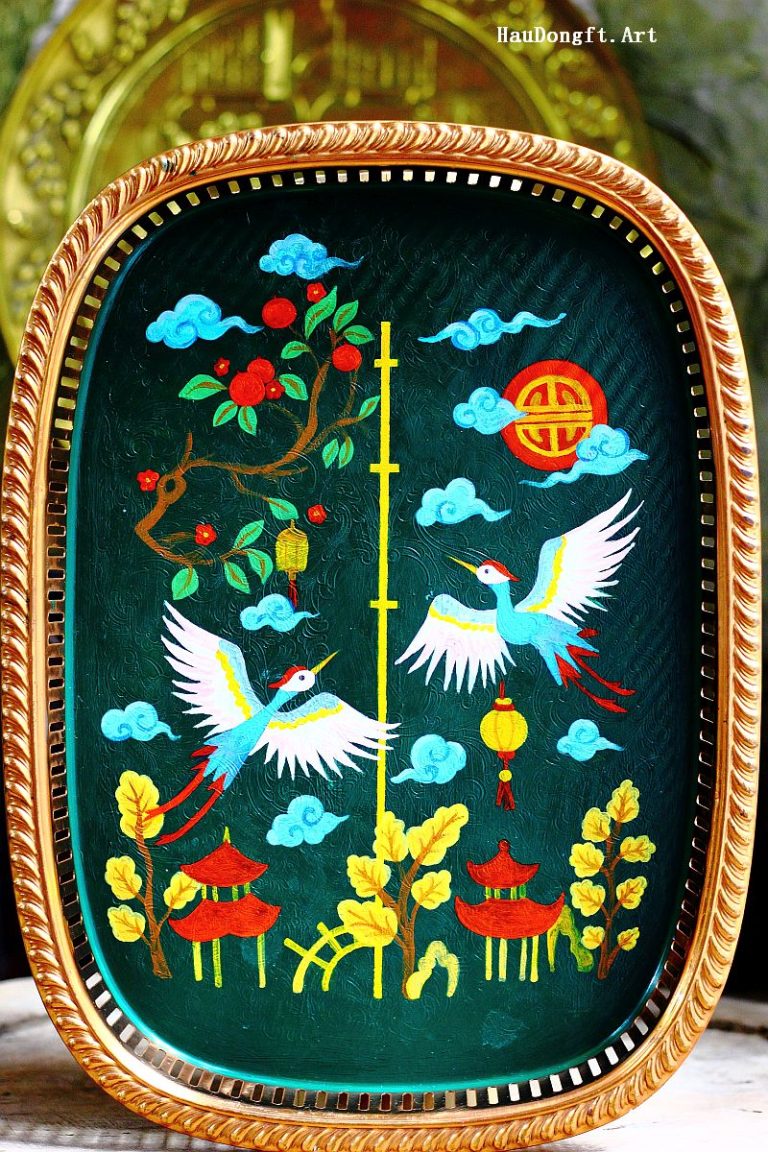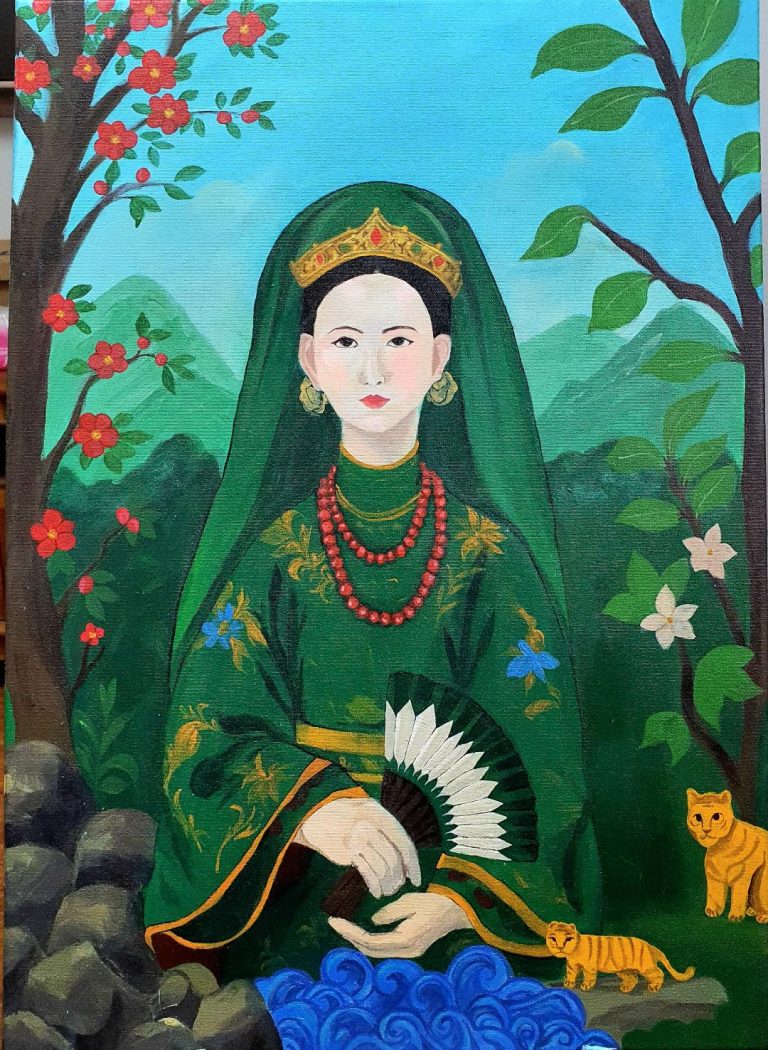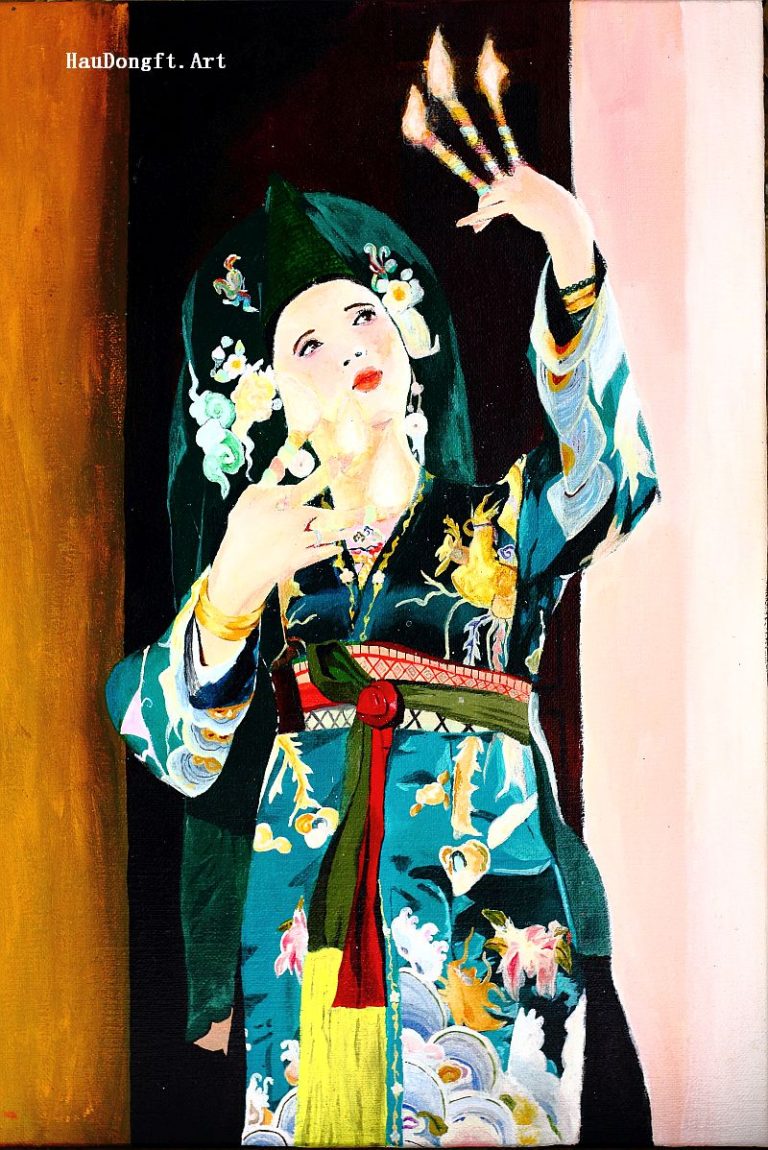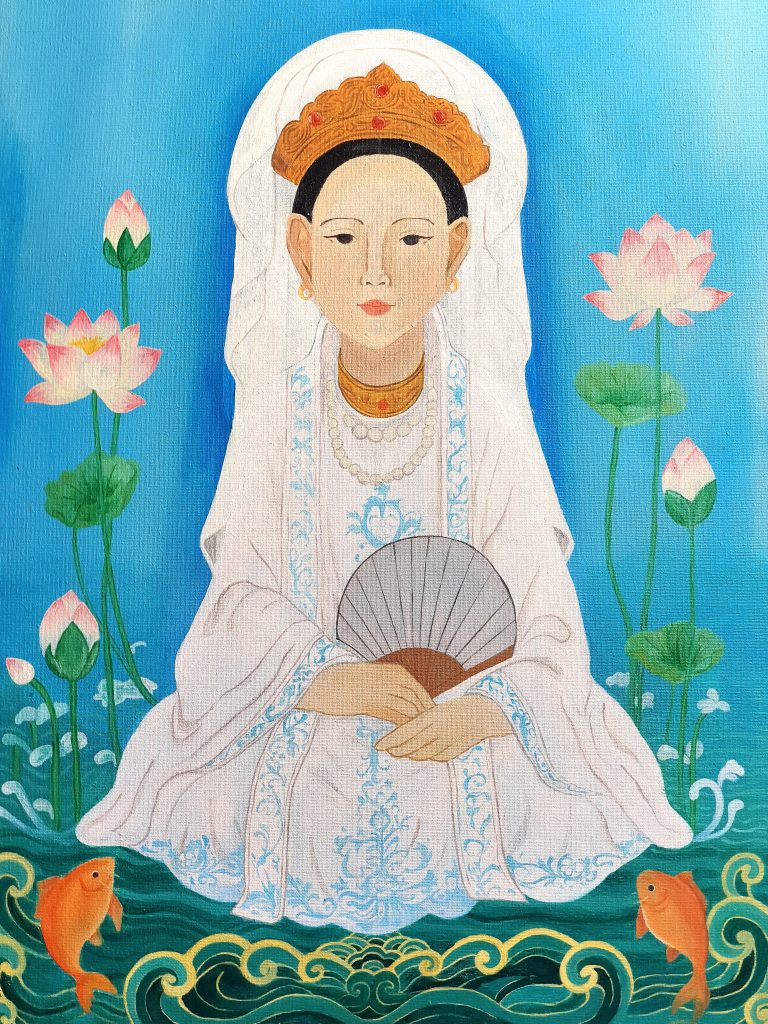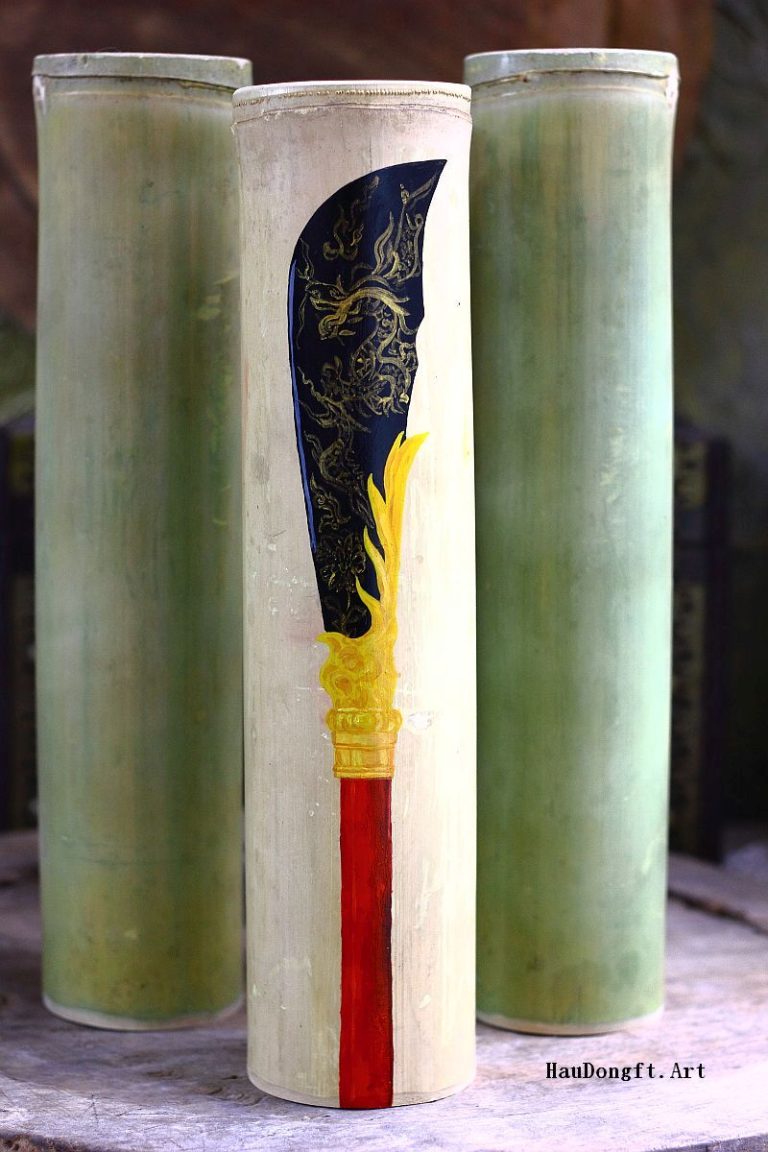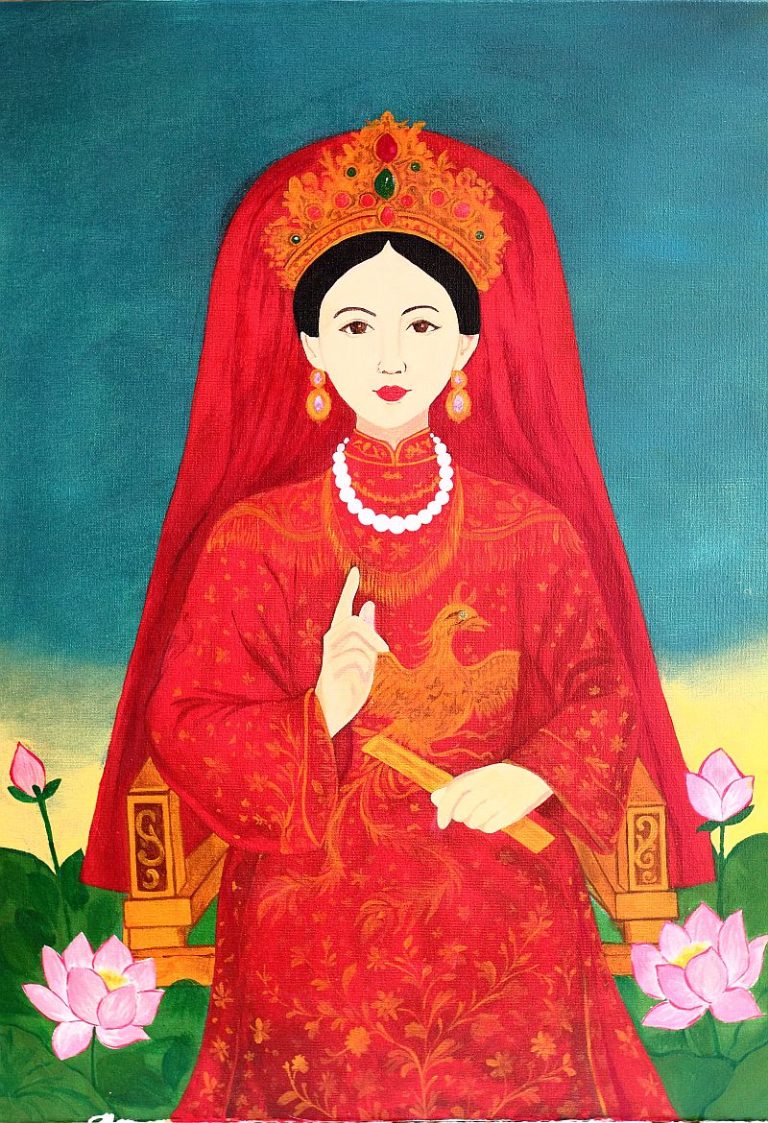Hầu đồng is a form of possession in which deities of the Four Palaces descend into the medium, re-embodying the image of the Holy Mothers and Saints as they appear among humans, close to earthly life.
Because of the cultural diversity across regions, we can clearly see the richness of forms, colors, and the meticulous craftsmanship of village artisans expressed in the costumes used during Hầu đồng. Dragons, phoenixes, waves, exquisite floral motifs, and elegant tailoring all testify to the artistry of those who sew the ceremonial robes and court garments. We should also acknowledge the hầu dâng assistants, who, with their own talent and care, help dress the medium; through them, many of the traditional aesthetic values of Vietnam’s Mother Goddess belief are preserved.
The predecessors of old imagined the figures and attire of the deities when they descended into mediums. Unlike the statues in temples—where officials wear winged hats or female deities wear phoenix crowns—the costumes in Hầu đồng are solemn yet resplendent with color, differing according to each palace, each rank, complete with hairpins, belts, veils, necklaces, and pearl ornaments. The ritual attire is usually made from brocade and silk sourced from Vietnam, China, Korea, or other countries.
Robes for male deities are typically woven with dragon motifs, dragon clusters, the Five Blessings, or the longevity symbol (thọ). Robes for female deities are embroidered with phoenixes, peacocks, or flowers of the four seasons. Wealthier mediums may wear robes embroidered with glossy silk or gold thread, while others may use simpler colored yarn.
To honor the privilege of being “a child of the Saints,” the ancestors had a saying: “Only when one is pure and worthy may one don the red robe.” This implies that wearing the robes of the deities is not simple; it requires sincere devotion. Even in hardship, with faith, one will receive divine protection and grace, thus becoming a true child of the Mother Goddess. Here, the “red robe” refers to the Công đồng robe, along with the red veil covering the face—considered the medium’s natal costume. This set is mandatory and accompanies the medium throughout their spiritual life. When presenting offerings and petitions at temples, the medium must bring their natal costume to absorb divine energy.
In addition, each medium must have a white hạ y (inner robe), symbolizing purity and solemn character before serving the deities. White also serves as the background color for all other hues. In paintings and photographs of Nguyễn-dynasty mandarins, ceremonial attire was always paired with white trousers. Therefore, when serving Lords (Quan) or Princes (Ông Hoàng), if one were to wear colorful or embroidered trousers, it would undermine the solemnity of the ritual.
Traditionally, the hạ y consisted of white trousers (with a 4–5 cm hem and a width of about 25–28 cm), a white short jacket tailored for men or women, and a white long robe shorter than the main ritual robe by about 10 cm. Male mediums wore robes with larger hems, female mediums with narrower ones, and the sleeves were also cut shorter. A pair of white socks completed the set. In the past, mediums went barefoot during possession, but today shoes or slippers are sometimes worn for appearance—though boots (hia) are avoided, as they are only appropriate when paired with winged hats.
Headgear is equally important. Most giá đồng (possession stages) require the medium to wear a turban (khăn xếp), sometimes layered with other scarves. Male deities such as the Great Lords and Princes often wear patterned headbands, while Ladies (Chầu), Goddesses (Chúa), and Maidens (Thánh cô) may wear shawls, sail-like scarves, or special knot turbans, matched to the deity’s rank.
In the past, turbans were mostly red, made of satin or velvet, with fewer and thinner folds than today, lending grace to the medium’s face. Today, turbans may come in many colors to match costumes—especially for female deities. However, for the Great Lords, the turban remains red, with only the headband’s pattern changing to match the robe, preserving their dignity when descending.
